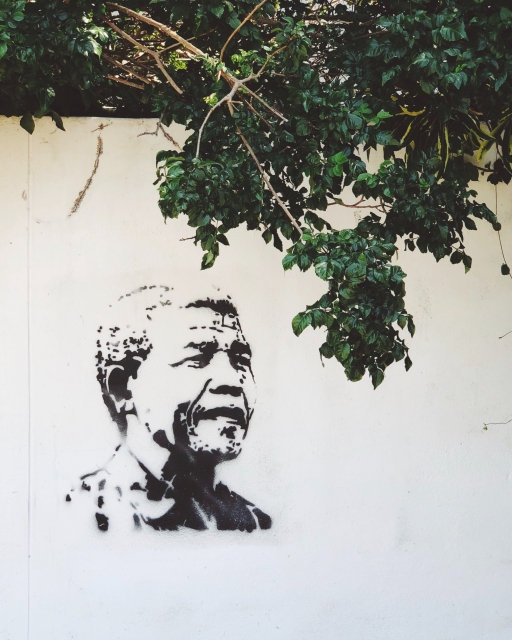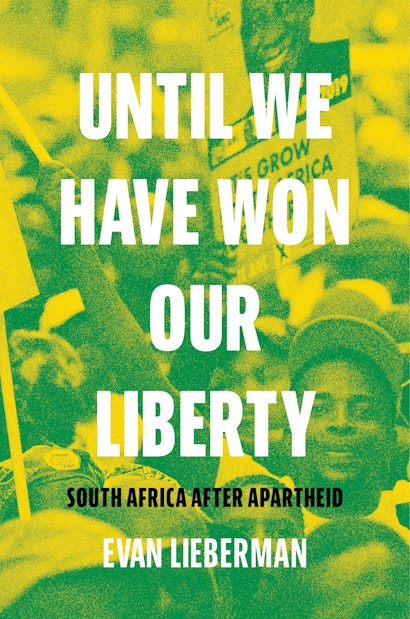On May 9, 1994 the Parliament convened, governed by the new Speaker, an Indian woman and human rights lawyer named Frene Ginwala. Their one order of business was to elect the new state president, Nelson Mandela, and they did so without dissent.
He and scores of other leaders would depart almost immediately for Pretoria, a two-hour flight away, as the new government adopted many of the old government’s rules and traditions, including keeping the Parliament in Cape Town and the executive government offices in Pretoria, which serves as a second capital city. (The third capital, of the judicial branch, is in Bloemfontein.) This multicitied capital was one of many holdovers from the creation of the Union of South Africa, which itself merged four separate entities.
On the following day, May 10, Mandela was inaugurated as the first post-Apartheid president at the age of seventy-five. The ceremony took place at the Union Building, originally completed in 1913 with the two wings meant to symbolize the union of the English and Afrikaner “races.” Now, in 1994, South Africa would, once again, mark with an election the unification of people and territory and much greater cultural diversity within its polity. Both within the ruling party and across the parties that had won seats in the new Parliament, citizens of almost any background could find some representative who looked like them and/or represented their interests and values. Very few could have said that they were fully excluded.
The day was nothing short of remarkable. At his inauguration, attended by dozens of world leaders, Mandela proclaimed, “Out of the experience of an extraordinary human disaster that lasted too long, must be born a society of which all humanity will be proud Never, never and never again shall it be that this beautiful land will again experience the oppression of one by another and suffer the indignity of being the skunk of the world.” It took a century of struggle, but in the final decade of the twentieth century, demographic reality finally became the basis for political power in South Africa and legalized apartness was over. Indeed, South Africans emerged relatively peacefully through the first election. Mandela, a political activist, and once widely recognized by Whites as a terrorist, was now the shining symbol of the “New South Africa.” The country, and the larger world, could not get enough of him.
I also wanted to see for myself. Following my first year of graduate school in June 1995, I traveled with my soon-to-be fiancée, Amy, to Cape Town for a two-week trip to lay eyes on the new version of the country I had last seen under very different circumstances in 1991. As always, it was a painfully long flight from the United States. We stayed in the not-yet-upgraded Breakwater Lodge, on the outskirts of what was still a relatively small waterfront development along the stunning Atlantic seaboard. Sleep-deprived, we were looking forward to getting some rest.
Standing in the way were revelers. There was partying in the hotel. Serious partying. And it went on All. Night. Long. Earlier that day, South Africa had defeated Australia in the first round of the Rugby World Cup, being hosted in the country for the first time, a dividend of huge proportions for the sport-loving White population. Kegs of Castle Lager flowed through the bars, raising the volume into our room each hour.
On the bright side, my friend Michael, still working at NDI, had thoughtfully bought us tickets to the next game, which would turn out to be South Africa versus Romania at Newland Stadium in Cape Town. The game itself was fun to watch, but I was not a big rugby fan. Why throw the ball backward? For me, the real spectacle was the fans. Black spectators accustomed to cheering for any team competing against South Africa were now rooting for a group of essentially all-White men, resolved, at least for now, that they were actually on the same side. And watching the massive-bodied White rugby fans do as Juliana Steyn had done, awkwardly mouthing their way through “Nkosi Sikelel’ iAfrika,” and the Black fans willing to reappropriate this team and their symbols as their own—if that wasn’t a spirit of reconciliation, it was hard to imagine what would be. Pessimists became optimists, and of course the fact that the South Africans would eventually win the cup helped gen- erate a collective sense of pride about what had been accomplished as a new nation in relatively short order. And Mandela conspicuously displayed his forbearance toward White South Africa when he opted to don the Springbok jersey—previously a symbol of “White” South Africa—at the final awards ceremony, a moment dramatically captured in the movie Invictus.
Evan Lieberman is the Total Professor of Political Science and Contemporary Africa at the Massachusetts Institute of Technology. He is the author of Boundaries of Contagion: How Ethnic Politics Have Shaped Government Responses to AIDS (Princeton) and Race and Regionalism in the Politics of Taxation in Brazil and South Africa. Twitter @evlieb

